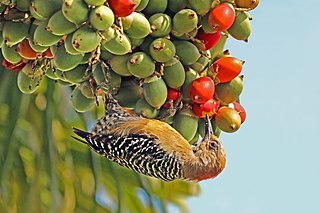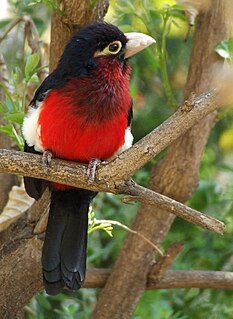Lester Leroy Short (born May 29, 1933) is an American ornithologist. His main research field is the order Piciformes.
Short was born in Port Chester, New York. In 1955 he received a PHD from Cornell University. After a study of vertebrate zoology at Charles Sibley in the Cornell University he wrote his dissertation with the title Hybridization in the Flickers (Colaptes) of North America in 1959. From 1960 to 1962 he was assistant professor at the Adelphi University. From 1963 to 1966 he worked for the United States Fish and Wildlife Service. From 1966 until his retirement in 1997 he was Lamont curator of birds at the American Museum of Natural History. In that position he made expeditions to South America, Africa, Asia, Australia and the Pacific islands. In 1972 Short took part on a survey to study the Okinawa woodpecker. After the results of this expedition were published in the Wilson Bulletin in 1973 the American public became aware of the threats which brought the Okinawa woodpecker to the verge of extinction. A planned project to build United States Marine Corps facilities in the Yambaru forest in the northern Okinawa was stopped to protect the woodpecker. In 1986 and 1987 Short was among the members of a Cuban-American-Expedition which were able to observe the thought to be extinct Cuban ivory-billed woodpecker (Campephilus principalis bairdii) for a short while. This was the last reliable sighting of this subspecies.
Short is the author of Woodpeckers of the World (1982), a comprehensive account on the order Piciformes, and of more than 250 scientific articles including descriptions of the Kaempfer's woodpecker and the pale-eyed blackbird. In 1978 he married the Kenyan ornithologist and bioacoustican Jennifer F. M. Horne who died in 2008.

Woodpeckers are part of the family Picidae, that also includes the piculets, wrynecks, and sapsuckers. Members of this family are found worldwide, except for Australia, New Guinea, New Zealand, Madagascar, and the extreme polar regions. Most species live in forests or woodland habitats, although a few species are known that live in treeless areas, such as rocky hillsides and deserts, and the Gila woodpecker specialises in exploiting cacti.

Nine families of largely arboreal birds make up the order Piciformes, the best-known of them being the Picidae, which includes the woodpeckers and close relatives. The Piciformes contain about 71 living genera with a little over 450 species, of which the Picidae make up about half.

New World barbets are near passerine birds from the family Capitonidae of the order Piciformes which inhabit humid forests in Central and South America. They are closely related to the toucans.

Honeyguides are near passerine birds in the order Piciformes. They are also known as indicator birds, or honey birds, although the latter term is also used more narrowly to refer to species of the genus Prodotiscus. They have an Old World tropical distribution, with the greatest number of species in Africa and two in Asia. These birds are best known for their interaction with humans. Honeyguides are noted and named for one or two species that will deliberately lead humans directly to bee colonies, so that they can feast on the grubs and beeswax that are left behind.

The northern flicker or common flicker is a medium-sized bird of the woodpecker family. It is native to most of North America, parts of Central America, Cuba, and the Cayman Islands, and is one of the few woodpecker species that migrate. Over 100 common names for the northern flicker are known, including yellowhammer, clape, gaffer woodpecker, harry-wicket, heigh-ho, wake-up, walk-up, wick-up, yarrup, and gawker bird. Many of these names derive from attempts to imitate some of its calls.

The greater honeyguide is a bird in the family Indicatoridae, paleotropical near passerine birds related to the woodpeckers. Its English and scientific names refer to its habit of guiding people to bee colonies. Claims that it also guides non-human animals are disputed.

The toco toucan, also known as the common toucan or giant toucan, is the largest and probably the best known species in the toucan family. It is found in semi-open habitats throughout a large part of central and eastern South America. It is a common attraction in zoos.

The emerald toucanet or northern emerald toucanet is a species of near-passerine bird in the family Ramphastidae occurring in mountainous regions of Mexico and Central America. Several taxa formerly included within this species have now been re-classified into separate species of their own.

Ramphastos is a genus of toucans, tropical and subtropical near passerine birds from Mexico, and Central and South America, which are brightly marked and have enormous, often colourful, bills.

Colaptes is a genus of birds in the woodpecker family Picidae. The 14 species are found across the Americas.

The yellow-throated toucan is a large toucan in the family Ramphastidae found in Central and northern South America.

The African barbets are birds in the family Lybiidae. They were usually united with their New World and Asian relatives in the Capitonidae for quite some time, but this has been confirmed to be limited to the main New World lineage. There are 43 species ranging from the type genus Lybius of forest interior to the tinkerbirds (Pogoniulus) of forest and scrubland. They are found throughout sub-Saharan Africa, with the exception of the far south-west of South Africa.

Galbula is the type and largest genus of the jacamar family (Galbulidae) of piciform birds, and its suborder Galbulae. Sometimes, the Piciformes are split in two, with the Galbulae upranked to full order Galbuliformes.

The Guianan toucanet, or Guyana toucanet is a species of bird in the family Ramphastidae found in the north-eastern Amazon rainforest.

Gould's toucanet is a species of bird in the family Ramphastidae. It is found in the south-eastern part of the Amazon rainforest, with a disjunct population in Serra de Baturité in the Brazilian state of Ceará. Except for the bill-pattern, it resembles the spot-billed toucanet, and the two have been considered conspecific in the past. It weighs 131–209 grams

The yellow-eared toucanet is a species of bird in the family Ramphastidae found in humid forests of Central America and the Chocó. Cassin's aracari is an alternate name for the yellow-eared toucanet. A somewhat aberrant member of the genus Selenidera, it is relatively large and the plumage of the sexes only differ in that the male has a yellow auricular streak, while the female has a brown crown. It weighs 175-245 grams

Toucans are members of the Neotropical near passerine bird family Ramphastidae. The Ramphastidae are most closely related to the American barbets. They are brightly marked and have large, often-colorful bills. The family includes five genera and over forty different species.
Jennifer Felicity Mary Horne also known as Jenny Horne or after her marriage as Jennifer Horne-Short was a Kenyan ornithologist and bioacoustician.

The black-throated toucanet is a near-passerine bird found in central Ecuador to western Bolivia.

Ramphastides is an infraorder of the order Piciformes that includes toucans and barbets. Formerly, the barbets have been classified in a single family, the Capitonidae. However, this has turned out to be paraphyletic with regard to toucans, which resulted in the Capitonidae being split into several families.